Engaged Buddhism: Compassion in action
Engaged Buddhism is a contemporary movement within the broader Buddhist tradition that seeks to apply the insights of Buddhist philosophy and meditative practice to the urgent social, political, economic, and environmental challenges of the modern world. Rather than viewing spiritual life as separate from worldly concerns, Engaged Buddhism asserts that awakening must include compassionate action in the world.

Buddhist monks on their daily alms round. Source: Pexelsꜛ (license: CC0ꜛ)
The term was coined in the mid-20th century by Vietnamese Zen master Thich Nhat Hanh, during a time of war and upheaval in Southeast Asia. It emerged as a response to the suffering caused by conflict, colonization, poverty, and ecological degradation, and has since taken root globally among both monastic and lay communities. In doing so, it revived and expanded the Buddhist ethical imperative to alleviate suffering wherever it arises, not just within oneself but within all sentient beings and social systems.
At its heart, Engaged Buddhism integrates the inner work of meditation with the outer work of activism. It emphasizes mindfulness as a foundation for ethical awareness and nonviolent action. Practitioners are encouraged to cultivate stillness, insight, and compassion in order to meet the world’s suffering with clarity and purpose. This union of contemplation and engagement defines Engaged Buddhism as both a spiritual path and a form of ethical resistance.
Origins and key figures
The roots of Engaged Buddhism stretch back to the earliest teachings of Siddhartha Gautama, especially the emphasis on ethical conduct, non-harming (ahiṃsā), and compassion (karuṇā) toward all sentient beings. These values form the moral bedrock of Buddhist practice and provide a timeless foundation for social and environmental responsibility. Throughout Buddhist history, many figures demonstrated concern for justice and collective well-being, even if the term “Engaged Buddhism” had not yet been coined.
The modern articulation of Engaged Buddhism is most closely associated with Vietnamese Zen master Thich Nhat Hanh, who introduced the term during the Vietnam War. Faced with the devastation of his homeland, Nhat Hanh argued that Buddhist practitioners could not remain silent or isolated from worldly suffering. Instead, mindfulness must extend beyond the meditation cushion into compassionate political and social action. His work, including the founding of the Order of Interbeing in 1966 and the Plum Village community in France, created a model for Engaged Buddhism that continues to inspire practitioners around the world.
Another major influence on Engaged Buddhism is the Mahāyāna Buddhist tradition, especially the Bodhisattva ideal. The Bodhisattva vows to remain in the world to alleviate the suffering of others, embodying the principle of selfless service. This aspiration underlies much of Engaged Buddhism’s ethos: spiritual liberation is not seen as a private escape, but as a commitment to the welfare of all beings. Through this synthesis of ancient principles and modern needs, Engaged Buddhism has become a dynamic expression of living compassion in the modern world.
Core principles of Engaged Buddhism
Engaged Buddhism is founded on a set of interwoven principles that bridge classical Buddhist teachings and the ethical demands of modern life. One of its most fundamental insights is the concept of interbeing, a term introduced by Thich Nhat Hanh to describe the radical interconnectedness of all existence. According to this view, no being or event exists independently; rather, all phenomena arise in mutual dependence. This recognition lays the foundation for a socially engaged ethic, where personal well-being is inextricably tied to the welfare of society and the natural world.
From this insight follows an active commitment to karuṇā (compassion), mettā (loving-kindness), and ahiṃsā (non-violence). These are not abstract ideals but daily practices that shape how individuals relate to others and respond to suffering. Compassion in Engaged Buddhism involves not only empathy for another’s pain but the willingness to act skillfully to alleviate it, whether through direct aid, advocacy, or nonviolent resistance.
Mindfulness (sati) serves as the operational core of Engaged Buddhism. It grounds ethical awareness in the present moment and allows practitioners to see the consequences of their actions clearly. By cultivating mindfulness, individuals learn to act with intention, clarity, and compassion, rather than from habit, fear, or anger. This inner clarity is seen as essential to transforming unjust social systems, because meaningful change requires both structural reform and personal transformation.
Engaged Buddhism also reframes dukkha, traditionally understood as individual suffering, as something embedded in systemic injustice. Institutionalized poverty, racism, war, and environmental destruction are viewed as collective expressions of suffering that must be addressed through wisdom and engaged practice. In this way, Engaged Buddhism extends the path of liberation beyond personal enlightenment to include the healing of communities and the Earth itself.
Areas of engagement
Several key areas of engagement characterize the work of Engaged Buddhists, each reflecting the core principles of compassion, mindfulness, and interdependence. These areas are not mutually exclusive but often overlap, as practitioners seek to address the interconnected crises of our time.
Peacebuilding and anti-war activism
One of the foundational commitments of Engaged Buddhism is to promote peace and confront the violence of war and militarism. Practitioners are involved in disarmament campaigns, reconciliation processes, and public demonstrations against armed conflict. Nonviolence (ahiṃsā) is not only a moral stance but also a practical strategy, rooted in mindfulness and aimed at de-escalating suffering and hatred. Engaged Buddhists frequently offer prayers, dialogue, and direct support to victims of war, while also critiquing the structural causes of violence, such as nationalism, colonialism, and the arms industry.
Social justice and human rights
Engaged Buddhism extends its ethical concern to the systemic injustices that affect human dignity and freedom. This includes work against racial discrimination, caste-based exclusion, gender oppression, and state violence. Inspired by the Bodhisattva vow to alleviate all suffering, practitioners participate in grassroots advocacy, legal reform, and educational programs. The focus is on creating inclusive communities that reflect the Dharma’s values of compassion, equality, and mutual respect.
Environmental protection and climate action
Environmental activism is a natural extension of the Buddhist principles of interdependence and non-harming. Engaged Buddhists have been at the forefront of ecological movements, advocating for the protection of forests, rivers, and endangered species. Practices such as tree ordination, sustainable farming, and climate vigils are expressions of ecological mindfulness. This form of activism emphasizes the sacredness of nature and frames environmental destruction as a form of collective dukkha.
Gender equality and LGBTQ+ inclusion
In both monastic and lay contexts, Engaged Buddhists have increasingly called for gender equality and the full inclusion of LGBTQ+ individuals in Buddhist communities. Patriarchal norms and traditional exclusions are being challenged in the name of mettā and karuṇā. Feminist and queer voices within Engaged Buddhism highlight how structural inequality causes suffering and how the Dharma can evolve to better serve all beings, regardless of gender or sexual identity.
Economic justice and opposition to consumerism
Engaged Buddhism critiques economic systems that generate greed, poverty, and alienation. It advocates for right livelihood, ethical consumption, and economic structures rooted in generosity and interdependence. Many practitioners reject hyper-consumerism and engage in alternative economies such as gift economies, cooperative enterprises, and voluntary simplicity. Economic justice, in this view, is inseparable from spiritual liberation, as both seek to reduce attachment and promote collective well-being.
Practices and methods
The practices of Engaged Buddhism are diverse and adaptable, reflecting the needs of specific communities and contexts. They often blend traditional Buddhist techniques with contemporary social action, creating a unique synthesis of meditation and activism.
Meditation retreats with social themes
Engaged Buddhism encourages retreats that focus not only on personal insight but also on collective suffering. These retreats often center on themes such as racial healing, environmental grief, or trauma recovery. Participants use meditative techniques, such as mindful breathing, walking meditation, and deep listening, to touch the pain of the world while remaining anchored in awareness. The purpose is not to escape the world, but to face it with openness, courage, and compassion.
Community-based mindfulness groups and sanghas
Sanghas (spiritual communities) serve as both support networks and laboratories for social change. These groups meet regularly to meditate, study the Dharma, and organize actions. In the spirit of Thich Nhat Hanh’s Order of Interbeing, sanghas often engage in ethical reflection and collective decision-making, embodying values like inclusivity, transparency, and shared responsibility. Through mindful community life, participants learn to extend their practice into relationships, families, and neighborhoods.
Non-violent protest and civil disobedience
Engaged Buddhists participate in marches, sit-ins, vigils, and public demonstrations that call attention to systemic injustice. What distinguishes Buddhist activism is its deep grounding in nonviolence (ahiṃsā) and mindfulness. Civil disobedience is viewed not as a disruption, but as a compassionate intervention, i.e., an attempt to interrupt harm and awaken moral awareness. These actions often include elements of meditation, silence, or chanting, transforming protest into sacred space.
Compassionate listening and dialogue
Dialogue and deep listening are essential practices in Engaged Buddhism, especially in conflict resolution and reconciliation efforts. Practitioners are trained to listen without judgment or defensiveness, creating safe spaces where suffering can be expressed and heard. This practice heals wounds across cultural, racial, and ideological divides, and fosters mutual understanding rooted in empathy rather than argument.
Rituals of remembrance and interconnection
Rituals are used to honor those who suffer or have died due to violence, injustice, or environmental destruction. Ceremonies may include lighting candles, chanting, planting trees, or offering food to spirits of the land. These symbolic acts help integrate grief, reaffirm moral commitments, and remind practitioners of their place in a vast web of life. Ritual thus becomes a bridge between the personal, the political, and the sacred.
Global movements and examples
Plum Village and the Order of Interbeing (International)
Founded by Thich Nhat Hanh, Plum Villageꜛ in France has become the most visible international hub of Engaged Buddhism. It offers retreats focused on mindfulness, peacebuilding, and social responsibility. The Order of Interbeing, established in 1966, provides a framework of ethical guidelines known as the Fourteen Mindfulness Trainings, which support engaged spiritual practice rooted in compassion and nonviolence.
Sarvodaya Shramadana Movement (Sri Lanka)
A.T. Ariyaratne founded the Sarvodaya Shramadana Movementꜛ in Sri Lanka, blending Buddhist principles with Gandhian economics. The movement empowers rural communities through self-help initiatives, sustainable development, and peacebuilding. Sarvodaya’s work demonstrates how Buddhist values can shape large-scale social and economic transformation without abandoning spiritual depth.
Soka Gakkai’s peace activism (Japan)
Though rooted in Japanese Nichiren Buddhism and differing in doctrine from other Engaged Buddhist groups, Soka Gakkaiꜛ has contributed significantly to peace advocacy, particularly in the areas of nuclear disarmament and human rights education. Through its global network and cultural initiatives, it mobilizes millions toward values aligned with engaged ethical action and global citizenship.
The Buddhist Peace Fellowship (USA)
Founded in 1978, the Buddhist Peace Fellowshipꜛ brings together practitioners committed to social justice, environmental sustainability, and anti-racism. It offers training, publishes resources, and facilitates community actions that integrate the Dharma with contemporary movements for liberation and equity.
Buddhist-led environmental activism in Asia
Across Thailand, Cambodia, and Myanmar, monks have developed unique forms of ecological activism. The most iconic practice is tree ordinationꜛ, in which trees are symbolically ordained as monks to prevent deforestation. These rituals serve both as spiritual statements and political tools, embedding environmental stewardship within the fabric of Buddhist tradition.
Criticisms and challenges
Even as Engaged Buddhism has gained traction, it faces several criticisms and challenges that merit reflection. These critiques arise from both within the Buddhist community and from external observers.
Tensions between activism and traditional monastic renunciation
One critique often leveled at Engaged Buddhism concerns the perceived tension between worldly activism and the traditional monastic ideal of renunciation. Classical Buddhist practice has emphasized solitude, detachment, and meditative discipline as the primary means of liberation. Critics worry that turning outward to address societal problems may distract practitioners from the inward journey or compromise the clarity of renunciant life. While some monastics have embraced engagement, others argue for preserving the contemplative focus of the tradition.
Risks of political co-optation or diluted doctrine
Another challenge lies in the risk of political co-optation. When Buddhism enters the realm of activism and public policy, it may be absorbed by ideological agendas or lose its spiritual depth. There is a concern that the Dharma could be used to justify political positions or that its teachings might be simplified to fit secular narratives. Practitioners must therefore maintain discernment, ensuring that their activism flows from mindfulness and compassion, rather than reactive partisanship.
Balancing inner transformation with outer change
A core strength — and challenge — of Engaged Buddhism is the effort to balance inner transformation with outer change. If activism proceeds without deep personal insight, it may become reactive, moralistic, or unsustainable. Conversely, a focus solely on individual meditation can result in spiritual bypassing, where practitioners retreat from the world’s suffering. Engaged Buddhism demands a dynamic synthesis: to act from a place of clarity, to reflect without withdrawing, and to cultivate a path where compassion guides both contemplation and action.
Conclusion
Engaged Buddhism stands as a powerful response to the unique suffering of our age. Rooted in the ethical and contemplative wisdom of early Buddhism and inspired by the Bodhisattva’s vow to remain in the world to alleviate suffering, it offers a model for spiritual practice that is neither passive nor isolated. Rather, it insists that genuine awakening cannot be separated from active care for others, especially in the face of systemic injustice, ecological collapse, and human suffering.
As a contemporary evolution of ancient values, Engaged Buddhism revitalizes core principles such as compassion, mindfulness, and interdependence, directing them toward modern crises. It calls on practitioners not only to see clearly but also to act compassionately: to extend their practice from the cushion into the street, the courtroom, the forest, and the marketplace.
Ultimately, Engaged Buddhism affirms that personal and collective liberation are inseparable. One cannot fully awaken while others suffer, nor can structural transformation succeed without inner clarity. In its blending of contemplative depth and courageous engagement, Engaged Buddhism remains a living tradition, grounded in timeless insight yet always responsive to the evolving needs of the world.
References and further reading
- Hanh, Thich Nhat Hanh, The Miracle of Mindfulness, 1975/2015, Beacon Press, ISBN: 978-1846044823
- Hanh, Thich Nhat Hanh, Interbeing: Fourteen Guidelines for Engaged Buddhism, 1987, Parallax Press, ISBN: 9781888375282
- King, Sallie B., Socially Engaged Buddhism, 2009, University of Hawai‘i Press, ISBN: 978-1888375084
- Queen, Christopher S. and Sallie B. King (eds.), Engaged Buddhism: Buddhist Liberation Movements in Asia, 1996, SUNY Press, ISBN: 978-0791428443
- Loy, David R., Ecodharma: Buddhist Teachings for the Ecological Crisis, 2019, Wisdom Publications, ISBN: 978-1614293828
- Kraft, Kenneth, The Wheel of Engaged Buddhism: A New Map of the Path, 1999, Weatherhill, ISBN: The Wheel of Engaged Buddhism: A New Map of the Path
- Macy, Joanna, World as Lover, World as Self, 1993, Rider & Co, ISBN: 978-0712656979
- Snyder, Gary, The Practice of the Wild, 1990/2020, Counterpoint, ISBN: 978-1640094215
- Plum Village websiteꜛ
- Wikipedia article on the Sarvodaya Shramadana Movementꜛ
- Sarvodaya Shramadana Movement websiteꜛ
- Soka Gakkai International websiteꜛ and Soka Gakkai Global websiteꜛ
- Buddhist Peace Fellowship websiteꜛ
- The Thailand Foundation on tree ordinationꜛ






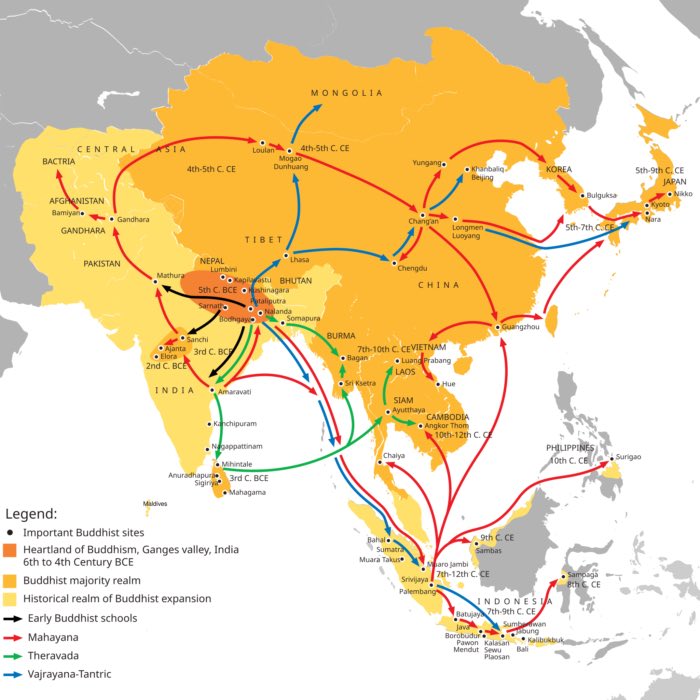
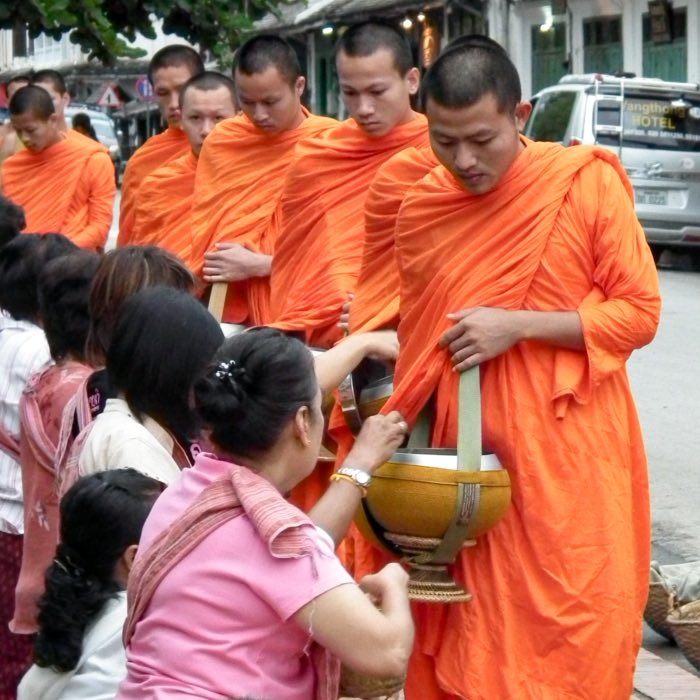
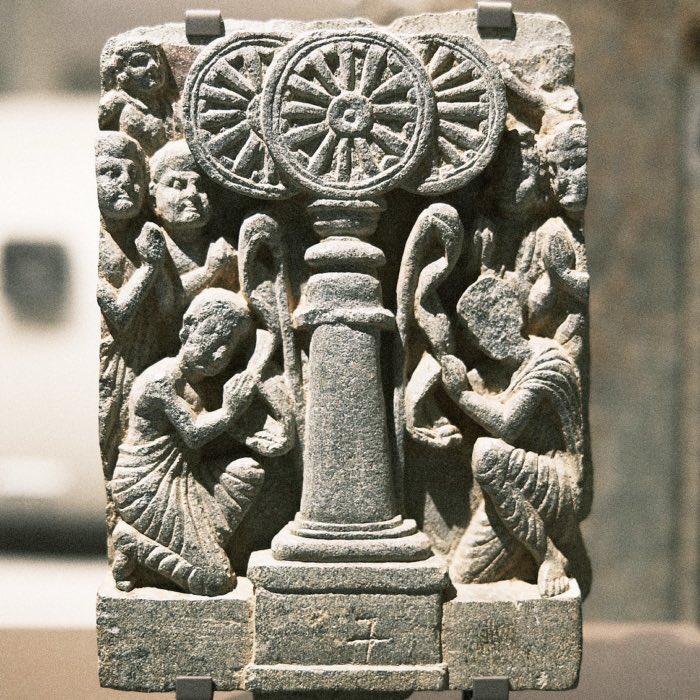
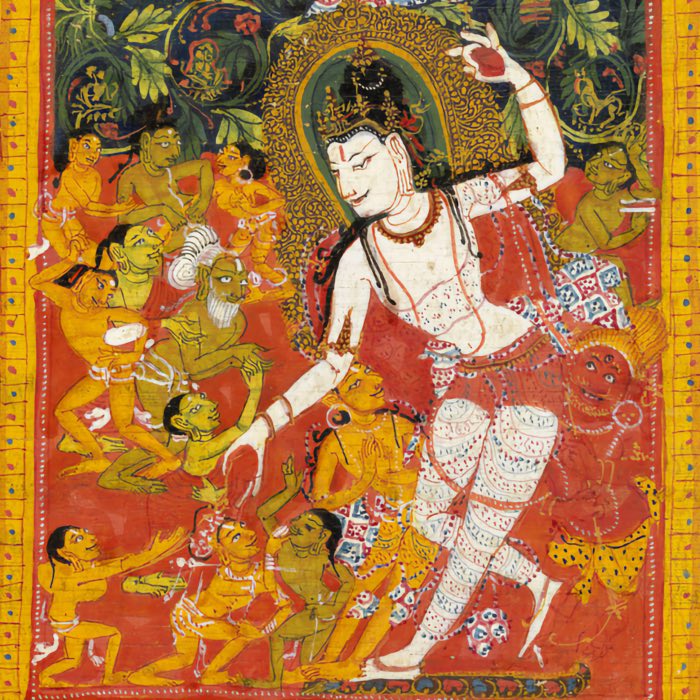

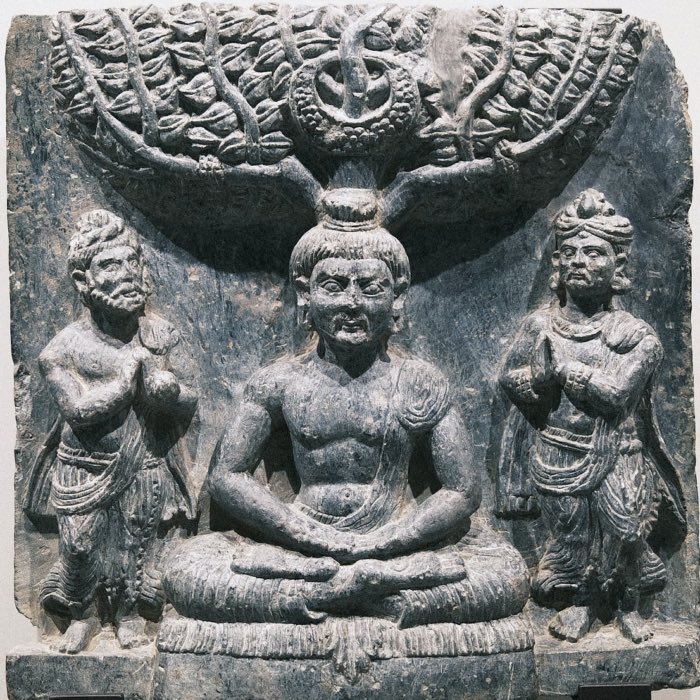

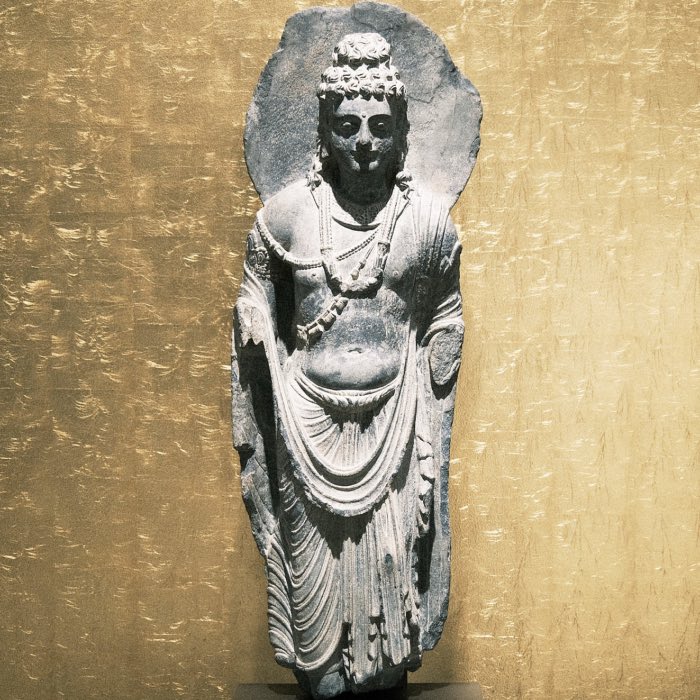
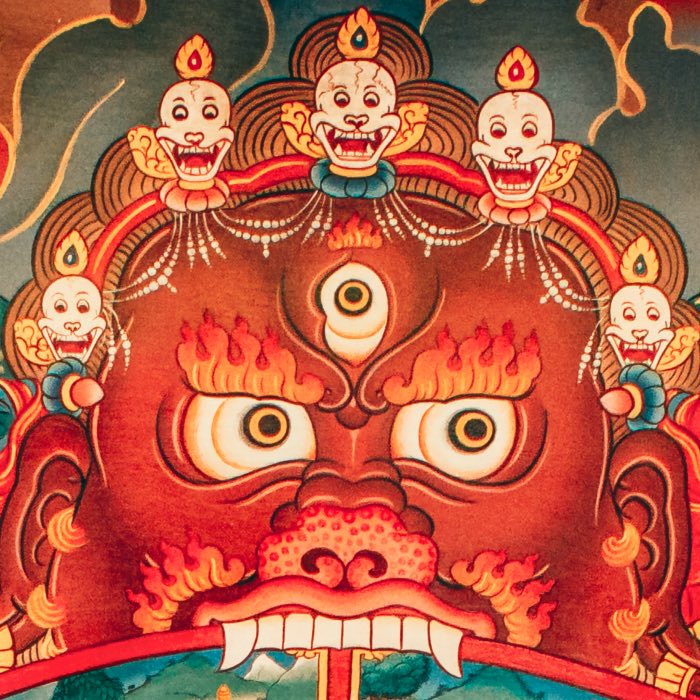


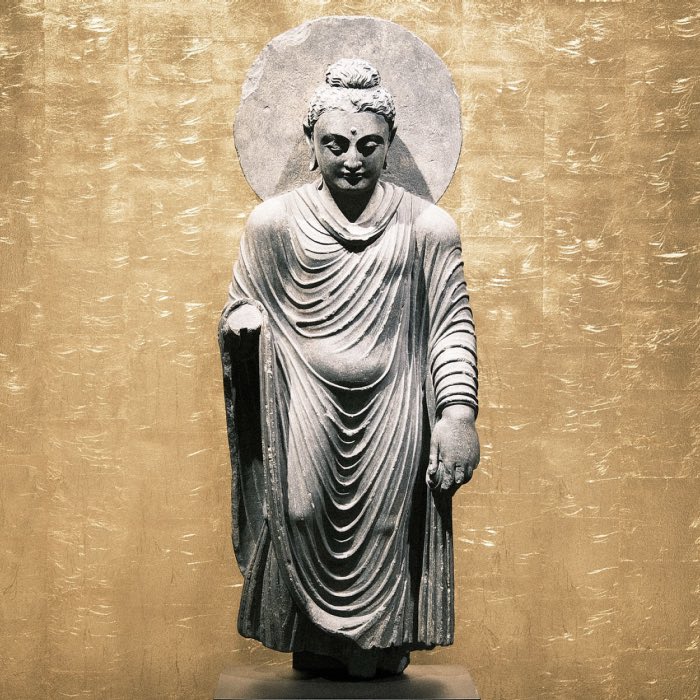

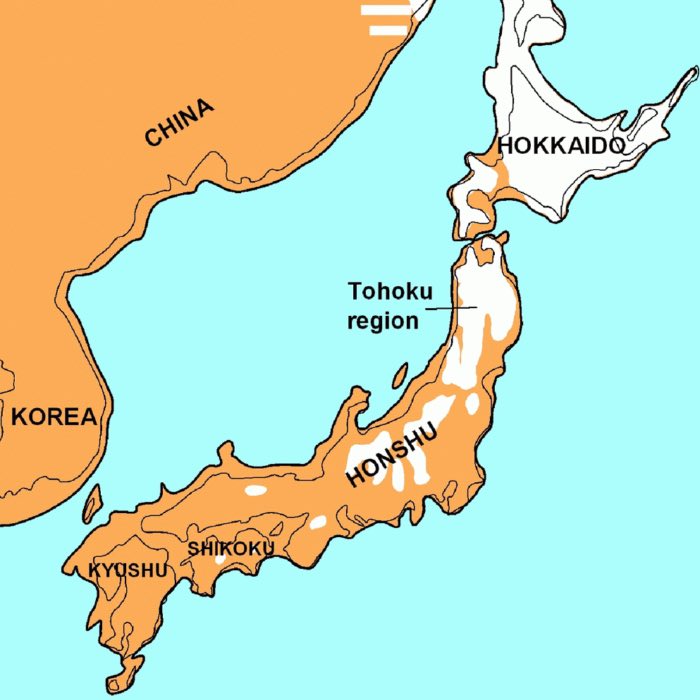
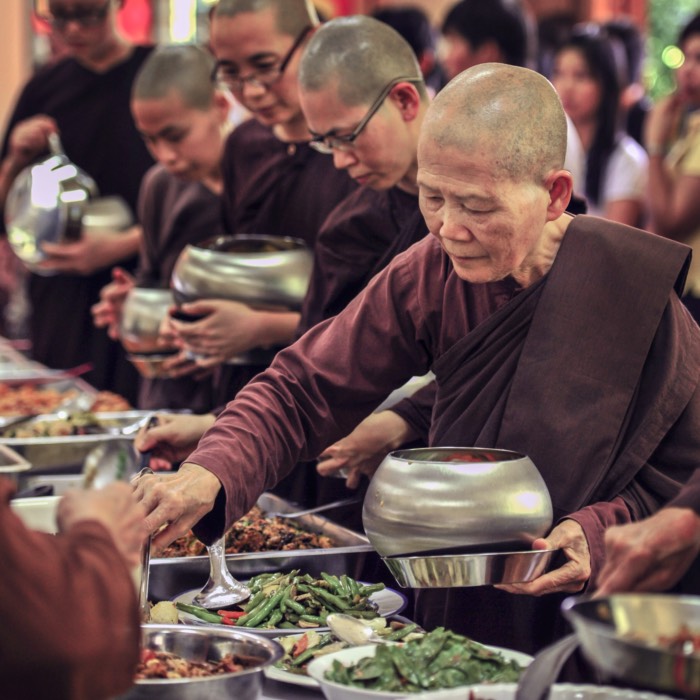

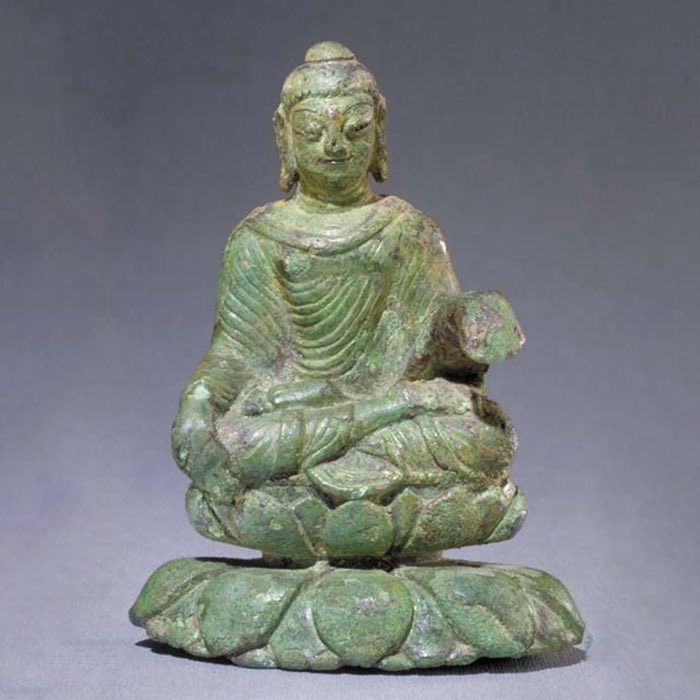

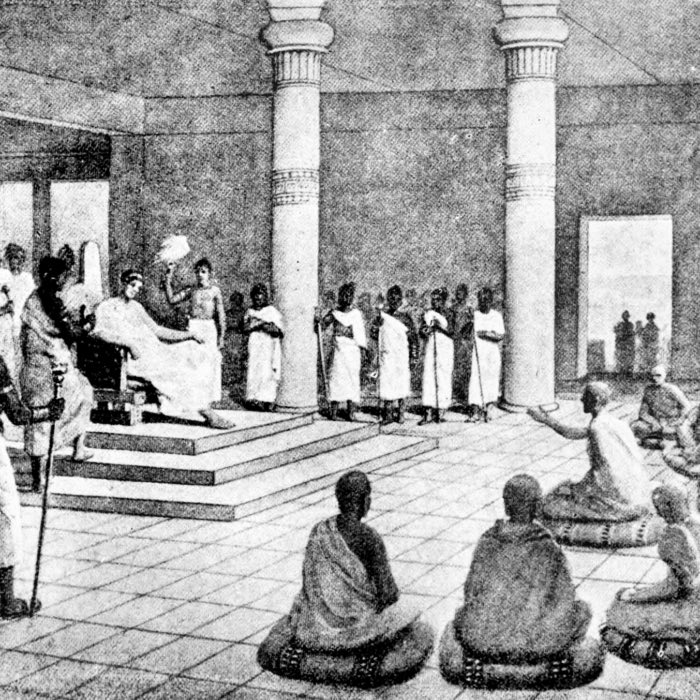
comments